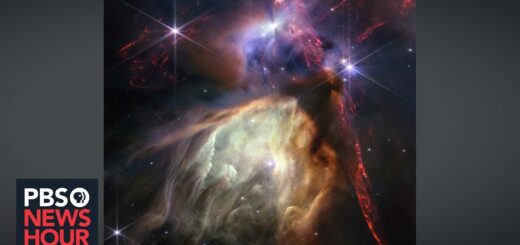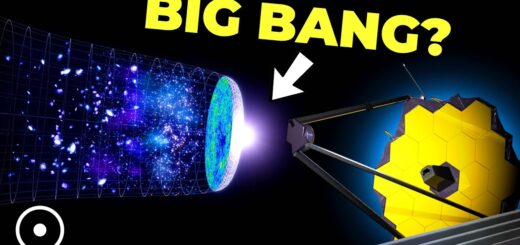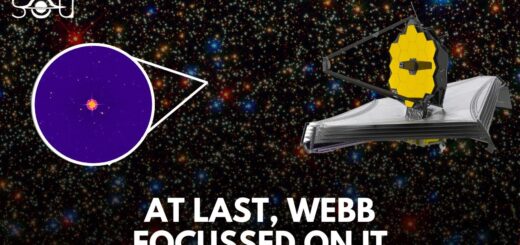James Webb Telescope Discovered An Object Older Than The Big Bang!
What caused the cosmos to exist? According to popular belief, everything began with the Big Bang. In a nutshell, the theory proposes that everything, everywhere, suddenly bursts to life. The catch is that everything and everything prior to the Big Bang is difficult to grasp. The Big Bang theory is the best model we presently have for the beginning of our universe. Astrophysicists have demonstrated that the hypothesis adequately describes phenomena observed in space over decades, such as lingering background radiation and elemental abundances. It’s a solid framework that provides us a good picture of how the universe came to be 13.7 billion years ago. However, with the recent surge of preprint papers and popular science articles about the first images from the James Webb Space Telescope, old, incorrect assertions that the Big Bang never happened at all have been circulating on social media and in the news. According to one expert, the JWST images are causing “panic among cosmologists,” or those who research the beginnings of the universe. Stay with us until the end to find out if this is real or not. Georges Lemaitre, an astronomer, had a big idea in 1927. He said that the universe began as a single point a very long time ago. He said that the universe stretched and expanded to become as large as it is now, and that it may continue to stretch. Only two years later, an astronomer called Edwin Hubble observed other galaxies heading away from us. Not only that, but the galaxies farthest away were moving faster than those closer to us. This meant that, as Lemaitre predicted, the universe was still expanding. If things were drifting apart, it signified that not so long ago, everything was closer together. The Big Bang, contrary to popular belief, was not an explosion in space. According to scholars, it was the manifestation of space everywhere in the universe. According to the Big Bang theory, the universe started as a single, extremely hot and dense point in space. Cosmologists are unsure what happened before this point, but scientists have been striving to paint a clearer image of the early universe and its development with sophisticated space missions, ground-based observatories, and complex computations. A significant contribution comes from measurements of the cosmic microwave background, which contains the afterglow of light and radiation left over after the Big Bang. This Big Bang relic pervades the universe and can be seen using microwave detectors, allowing scientists to piece together information about the early universe. NASA launched the Wilkinson Microwave Anisotropy Probe (WMAP) mission in 2001 to examine the early universe’s characteristics by monitoring radiation from the cosmic microwave background. Among other discoveries, WMAP was able to establish the age of the universe – roughly 13.7 billion years old. When the cosmos was very young — say, something like a hundredth of a billionth of a trillionth of a trillionth of a second (whew!) — it underwent an incredible growth spurt. During this period of exponential expansion, termed as inflation, the universe doubled in size at least 90 times. Within the first three minutes of the universe’s birth, light chemical elements were formed. Temperatures decreased as the universe expanded, and protons and neutrons collided to form deuterium, a hydrogen isotope. Much of this deuterium combined to form helium. However, for the first 380,000 years following the Big Bang, the immense heat from the universe’s birth rendered it impossible for light to shine. Atoms collided with such force that they shattered into a thick, opaque plasma of protons, neutrons, and electrons that dispersed light like fog. Then the universe began to emerge from its dark ages some 400 million years after the Big Bang. This period in the universe’s evolution is called the age of re-ionization. This dynamic phase was assumed to have lasted more than a half-billion years, but fresh findings suggest that re-ionization occurred faster than previously thought. During this period, clumps of gas condensed sufficiently to form the first stars and galaxies. The ultraviolet light emitted by these powerful events cleaned out and destroyed the vast majority of the surrounding neutral hydrogen gas. For the first time, the universe became transparent to ultraviolet light due to the process of re-ionization as well as the clearing of murky hydrogen gas. Astronomers scour the universe for the most distant and ancient galaxies in order to better comprehend the properties of the early universe. Similarly, by studying the cosmic microwave background, astronomers can work backwards to piece together the events that came before. However, fresh findings from the James Webb telescope are questioning our assumptions. Whatever the Webb telescope has found in the distant universe absolutely refutes our early universe model. Telescopes allow us to see very far away objects as well as light that was emitted a long time ago, which is similar to looking back in time. The story of the universe and its galaxies is similar to those of other stories. You lose a lot of insight if you skip the beginning. Seeing the light of the early galaxies provides a more perfect overview of galactic evolution. NASA’s James Webb space telescope was built specifically to detect the old stretched light from the earliest galaxies. Webb will fill in the blanks in the galactic history slideshow by digging deeper into the cosmos, providing crucial insight into some of our most pressing questions. How does the universe function, and how did we arrive here? Every day, NASA’s James Webb Space Telescope makes surprising discoveries, bridging gaps in our galaxy’s past with its astounding discoveries. Scientists expected to witness horribly mangled galaxies jumbled by many collisions or mergers because our early universe model anticipated that tiny galaxies grow up into present-day giant galaxies by colliding with each other, but what Webb telescope discovered surprised everyone. The big bang concept formerly denied that we may observe large and well-structured galaxies in the early universe, however recent images from the Webb telescope showed massive galaxies with stunning smooth discs and precise spiral shapes, exactly as we find in today’s galaxies. Additionally, one of the most far-off galaxy candidates in the early universe that was found by the Webb telescope is named as CEERS 93316. With an estimated redshift of 16.7, CEERS 93316 is a possible high redshift galaxy that was born 235 million years after the big bang. However, the brightness and size of this potential distant galaxy is what really set it apart. According to our current model, it is extremely difficult to produce such exceptionally bright and massive galaxies barely 200 million years after the big bang. In a recent publication, astronomers claimed to have discovered two huge galaxies with stellar masses 10 to the power of 11 times the mass of the sun at a redshift of 10 from the initial JWST images. This indicates that 500 million years after the big bang, these enormous galaxies were mostly formed. Although our current model fully rejects the possibility that huge galaxies may be found at redshift as high as 18, or just 175 million years after the big bang, given the presence of these galaxies at redshift 10, it does not rule out the possibility. Just 150 million years after the Big Bang, the birth of such huge galaxies is not anticipated by our present galaxy evolution model. The author also stated that the new images demonstrate that there are at least 100,000 times more galaxies than theorists projected at redshifts greater than 10. No way could so many massive galaxies have been created in such a short period of time. The earliest stars are supposed to have formed 100 million years after the big bang, but recent discoveries from the Webb telescope are refuting this theory. The JWST uses a variety of filters to capture images in the infrared region of the spectrum so it can see the colors of distant galaxies. Because young, hot stars are blue in color and older, cooler stars like our sun are yellow or red in color, this allows astronomers to estimate the age of the stars in these galaxies. The furthest galaxies in the JWST images are viewed as they were just 400 to 500 million years after the beginning of the universe, according to the big bang theory. However, something odd was discovered by scientists. How is it possible that these galaxies contain star populations that are more than a billion years old? Since nothing could have formed prior to the big bang, are we utterly mistaken about the early universe? The new JWST images of the cosmos are stunningly breathtaking to everyone who sees them. But they also come as a huge surprise to the majority of cosmologists and professional astronomers because they defy theory in every way. Since July 12, a deluge of technical astronomical publications has been released online. In these papers, the authors repeatedly note that the images reveal a very large number of galaxies, as well as galaxies that are unusually smooth, small, and old. There are many surprises, not all of them good. One paper’s title starts off with the direct cry of “Panic!” It is not difficult to understand why these too small, too smooth, too old, and too numerous galaxies are incompatible with the Big Bang theory. Smaller and smaller is exactly what the JWST images show. Even galaxies with more luminosity and mass than our own Milky Way galaxy seem two to three times smaller in these images than in identical Hubble Space Telescope (HST) images, and the new galaxies have redshifts that are two to three times greater. Some scientists believe that the expanding universe theory is also incorrect. They claim that the non-expanding cosmos is backing all of the James Webb telescope’s discoveries to some extent. Although we didn’t usually hear of it, there’s been dissatisfaction with the Standard Model, which begins with the Big Bang, ever since it was first proposed by Georges Lemaître nearly a century ago. But no one expected the James Webb Space Telescope to contribute to the debate. What are your thoughts? Was there a big bang or not? And is there anything older than it? Tell us in the comments.













